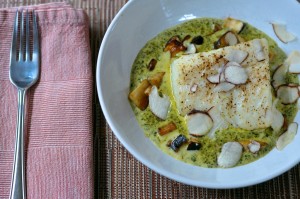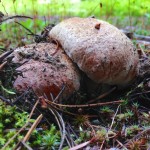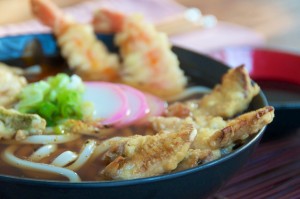 THE CAULIFLOWER mushroom, genus Sparasiss, is one of my favorites. It looks like something that should be growing on the sea floor, not in a forest, and it’s one of the best tasting of all the wild fungi. The mushroom grows from the duff at the base of trees, old-growth Douglas fir in particular where I live. When you find one, make sure to cut it off at the base with a knife.
THE CAULIFLOWER mushroom, genus Sparasiss, is one of my favorites. It looks like something that should be growing on the sea floor, not in a forest, and it’s one of the best tasting of all the wild fungi. The mushroom grows from the duff at the base of trees, old-growth Douglas fir in particular where I live. When you find one, make sure to cut it off at the base with a knife.
If there’s one drawback to Sparasiss, it’s cleaning them. All those ruffles and folds collect dirt and pine needles as the mushroom emerges from the ground—forest litter that’s difficult to remove. I run the mushroom under a strong tap and try to get as much off as possible, then slice into smaller pieces and wash those as well.
Cauliflower mushrooms are among the tastiest of our wild edible fungi, and in the kitchen they can be used in all sorts of ways. I braise, pickle, and sauté them. They’re especially good in a mushroomy broth. You can cook them for hours, infusing your other ingredients with deep fungal flavor, yet they still retain their al dente texture.
This is a composed dish. The different elements are bound by an intensely flavored yet soupy sauce of butter, chicken stock, and mushroom.
2 portions halibut fillet
1/2 lb cauliflower mushroom, cut into pieces
4 tbsp butter, plus extra
1 shallot, diced
1/4 cup white wine
2 cups chicken stock
1/4 lemon
root vegetable medley, julienned
olive oil
salt and pepper
parsley garnish
1. Pre-heat oven to 375 degrees. Peel and cut root vegetables into equal shapes and sizes. Mine were twice the size of matchsticks, with a mix of celery root, purple yam, parsnip, and carrots, enough to cover a small roasting pan. Brush on olive oil and roast in oven, cooking for minimum 1/2 hour, tossing and seasoning with salt and pepper at least once.
2. While root vegetables are roasting, heat a large sauce pan on medium-high and melt 2 tablespoons butter. Sauté diced shallot for a minute or two and add mushrooms. They’ll soak up the butter quickly, so be ready to add more butter or olive oil. Once the mushrooms have reduced in size and started to brown on the edges, add a splash of wine to de-glaze. Now add 1/2 cup chicken stock and cook that down, adding more stock as the broth reduces and starts to thicken, repeating until the broth is soupy and flavorful, 15 minutes or so. Squeeze in a quarter lemon. Before serving, stir in remaining 2 tablespoons butter.
3. When mushroom broth and root vegetables are nearly done, heat a non-stick pan on medium-high, grease with olive oil, and pan-fry halibut. Season with salt and pepper as you cook and add a little butter. Depending on thickness of fillets, cook each side for a few minutes until the fish is golden on the outside and opaque yet flaky tender inside. Spoon mushrooms and broth into bowls, cover with root vegetables, and top with fish. Sprinkle over a pinch of chopped parsley.



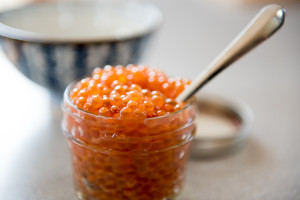






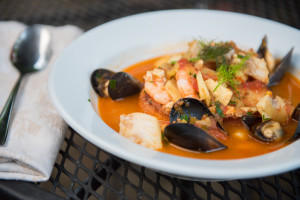


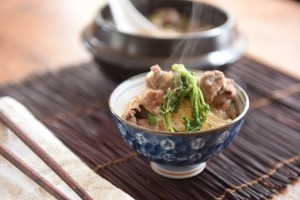
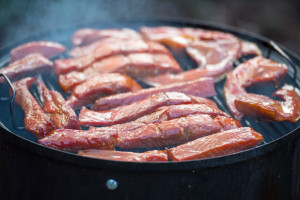



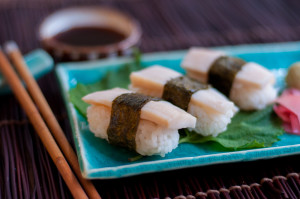




 THE RED HUCKLEBERRY (Vaccinium parvifolium), tart and pretty, is the first of our huckleberries to fruit in the Pacific Northwest. The trailing blackberry (Rubus ursinus), smaller and firmer in comparison to non-native relatives such as the ubiquitous Himalayan blackberry, with a more complex taste profile, is often nearby. Unlike other varieties, trailing blackberries don’t grow on upright canes; they snake along the ground and over deadfall, hence their common name.
THE RED HUCKLEBERRY (Vaccinium parvifolium), tart and pretty, is the first of our huckleberries to fruit in the Pacific Northwest. The trailing blackberry (Rubus ursinus), smaller and firmer in comparison to non-native relatives such as the ubiquitous Himalayan blackberry, with a more complex taste profile, is often nearby. Unlike other varieties, trailing blackberries don’t grow on upright canes; they snake along the ground and over deadfall, hence their common name.



